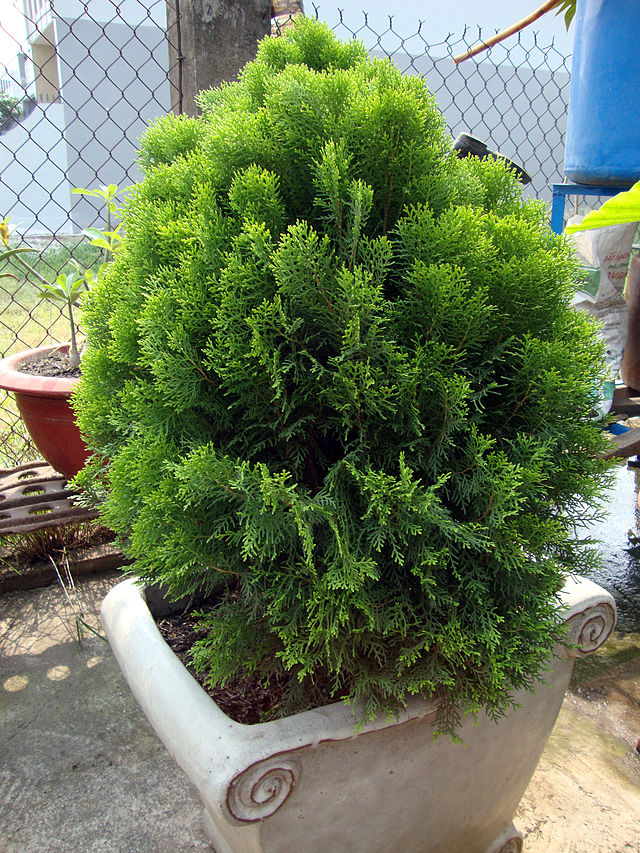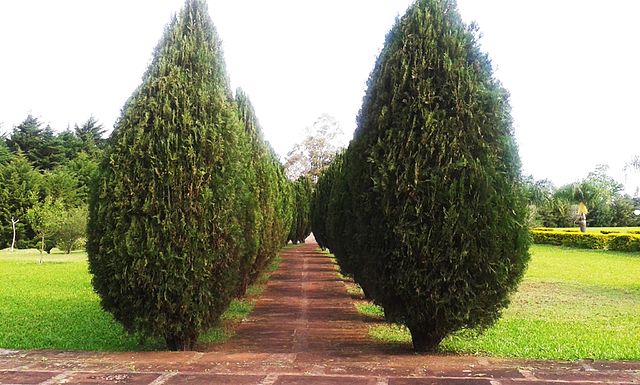New! Check out our new line of Rose seeds for making a wonderful living fence, hedge or privacy screen.
Seeds for Hedges ( Perennials )
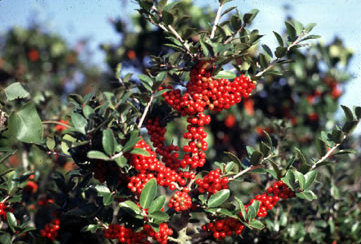
The leaves are small, leathery and bright green and are not prickly like other hollies. The flowers attract bees and butterflies. This holly can rapidly reach 10 to 20 feet tall and 8 to 12 feet wide, so allow proper spacing when planting multiples. It will form thickets unless the suckers are removed.
Though occasionally used for hedging, it is primarily used for landscaping. The wood of the Ilex vomitoria is heavy and hard, making it useful for turnery, inlay work, and other woodenware. The plant is also culturally significant: Native Americans used the leaves and stems to make a tea containing caffeine, a unique quality in a North American plant. Rediscovered in modern times, yaupon tea made from dried leaves is now commercially available. Add this picturesque and useful plant to your garden today!
Grow as a container plant or outside in zones 7-9.
This slow-growing arborvitae is used in landscapes around the world where it is associated with long life and vitality. Some large specimens growing around Buddhist temples in China are 1000 years old or older. A very beautiful Arborvitae perfect for planting below power lines because of their slow growth.
For zones 6-9.
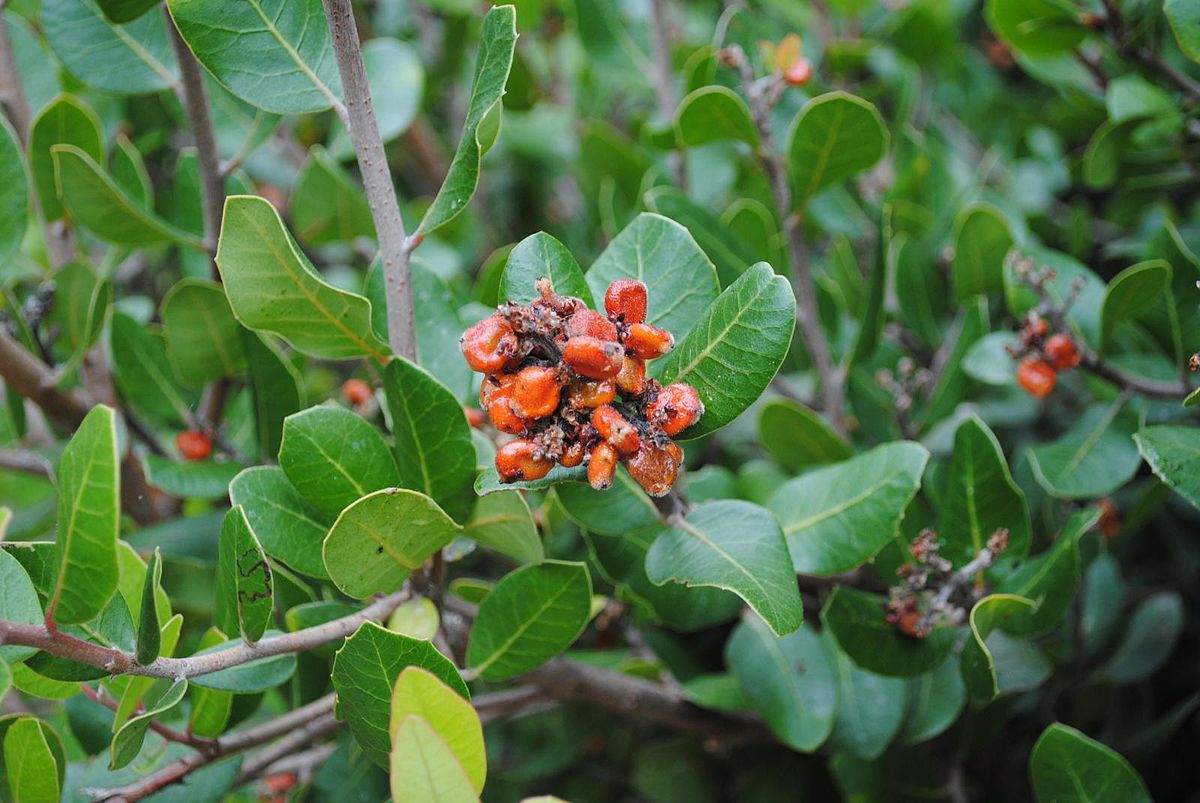
Rhus integrifolia can also be used as a landscape shrub and is suitable for hedging and espalier. The plant is vulnerable to frost, but often the plant will regrow by summer, after it appears to have died from cold.
The small flowers, in tightly grouped clusters, are white to rose-pink in color and bloom at the tips of branches from February to May. The fruit is a sticky, flattish drupe that is covered with a fine reddish-brown down, inside of which is a hard stone of a seed about 1/4 inch long. Plant in full sun to light, or even dense shade. It is drought tolerant once established and cold hardy to 10°F.
It can also be kept smaller by regular light pruning and can even be trained as a formal hedge. If this plant becomes too big or too lanky, give it a hard pruning, even to the ground in late winter, and this plant will resprout new shoots rapidly.
Use care when pruning as this sumac relative has sap that can cause a rash. Lemonade Berry is found growing naturally below 2,600 feet in coastal sage scrub and chaparral on dry, mostly open-facing slopes from Santa Barbara county to Baja.
The sticky substance covering the fruit tastes like bitter lemons, which gives the plant its name.
The berries are edible and can also be used for lemonade. Lemonade berry is also good for erosion control. The fruit is consumed by roadrunners and many upland gamebirds, songbirds, large and small mammals. Also provides a special value to native bees.
Medicine: Tea made from the stems can be used to treat coughs. The tea made from the bark, berries, or leaves steeped in cold water can be gargled for sore throats and cold sores, or you can drink it to alleviate diarrhea or urinary problems (best to use leaves for the latter). Best suited for zones 8-10.
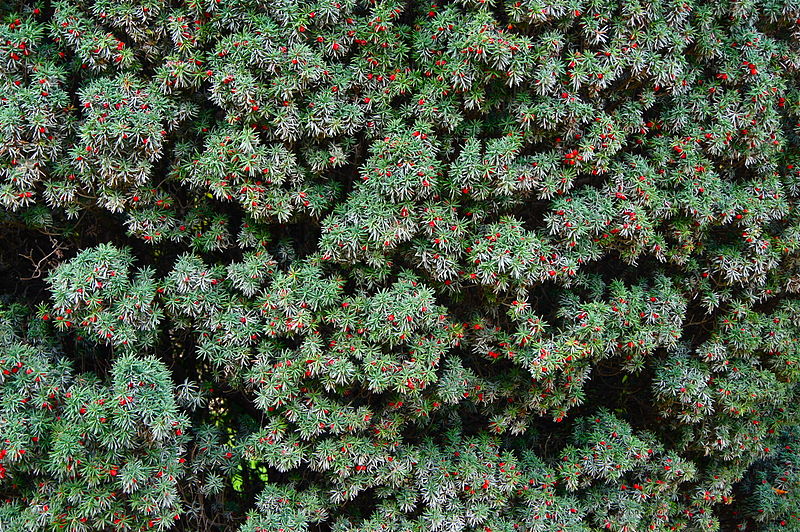
A very useful tree for hedging and topiary. Can be closely trimmed. Must have well drained soil. If let go without trimming, can become a very large bush. One of the few plants which will flourish under Beech and is remarkably tolerant of shade. Yew is poisonous to stock including man but deer have been known to eat it without ill effect. Average annual growth of 20 cm. Zone 6-9.
It is a small to medium-sized evergreen tree, growing 10-20 m tall, exceptionally up to 28 m. It is relatively slow growing, but can be very long-lived, with the maximum recorded trunk diameter of 4 m probably only being reached in around 2,000-4,000 years. Taxus baccata is the oldest plant in Europe.
It has thin scaly brown bark. The leaves are lanceolate, flat, dark green, 1-4 cm long and 2-3 mm broad, arranged spirally on the stem, but with the leaf bases twisted to align the leaves in two flat rows either side of the stem except on erect leading shoots where the spiral arrangement is more obvious.
The seed cones are highly modified, each cone containing a single seed 4-7 mm long partly surrounded by a modified scale which develops into a soft, bright red berry-like structure called an aril, 8-15 mm long and wide and open at the end. The arils are mature 6-9 months after pollination, and with the seed contained are eaten by thrushes, waxwings and other birds, which disperse the hard seeds undamaged in their droppings; maturation of the arils is spread over 2-3 months, increasing the chances of successful seed dispersal. The male cones are globose, 3-6 mm diameter, and shed their pollen in early spring. It is mostly dioecious, but occasional individuals can be variably monoecious, or change sex with time.
All parts of the tree are highly toxic, except the bright red aril surrounding the seed, enabling ingestion and dispersal by birds.
In the ancient Celtic world, the yew tree (*eburos) had extraordinary importance; a passage by Caesar narrates that Catuvolcus, chief of the Eburones, virtually "sons of the yew", poisoned himself with yew rather than submit to Rome (Gallic Wars 6: 31). Similarly, Florus notes that when the Cantabrians were under siege by the legate Gaius Furnius in 22 BC, most of them took their lives either by the sword or by fire or by a poison extracted ex arboribus taxeis, that is, from the yew tree (2: 33, 50-51). In a similar way, Orosius notes that when the Astures were besieged at Mons Medullius, they prefered to die by their own swords or by the yew tree poison rather than surrender (6, 21, 1.). In Hispania, Prudentius (Contra Simacum 2: 1005-1011) and Martin of Braga in Visigothic times (De correctione rusticorum 8) denounced the fact that the Hispanic country folk still worshipped trees and sacred stones (Simón 2005).
Yew is also associated with Wales because of the longbow, an early weapon of war, developed in Wales. Yew is the wood of choice for longbow making and the bows are constructed so that the heartwood of yew is on the inside of the bow while the sapwood is on the outside. This takes advantage of the natural properties of yew wood since the heartwood is able to withstand compression while the sapwood is elastic and allows the bow to stretch. Both tend to return to their original straightness when the arrow is released.
The chemotherapy drug docetaxel is derived from Taxus baccata.
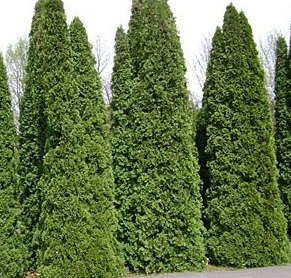
A medium to fairly large, very long-lived conifer widely distributed in temperate forests in northeastern North America with much-branched shoots that are covered in tiny, scalelike, fragrant evergreen leaves.
The relatively slender trunk rarely reaches more than 3 feet in diameter and has flaking, reddish-brown bark. Its is one of the most popular conifers in the temperate garden in USDA Zones 2 to 8 and much used for hedges and screens.
It has many medicinal applications and the wood is very rot resistant.
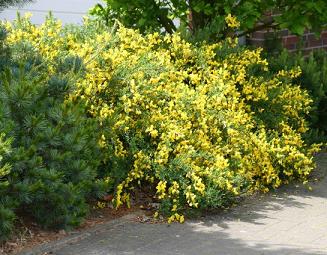
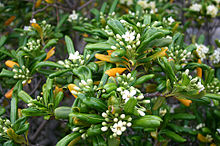
Does well in the shade or full sun, making it a useful lawn shrub.
The leathery leaves are glossy on the top with undersides that are lighter and have a dull surface. These very ornamental leaves reach a length of from 1 to 5 inches and up to 1 inch wide.
However, our favorite feature is the waxy white flowers that add a delightful fragrance to the spring garden. Japanese mockorange is named so because the scent put forth by its blossoms is similar to that of the sweet orange (Citrus sinensis). The small flowers are about a half inch in diameter and are held in clusters at the branch tips. They are pure white when they emerge from the bud and slowly age to a mellow creamy yellow. They appear in late spring and last for several weeks.
Native to China and Japan, it is used as an ornamental in milder climates throughout the world. In the USA, it is a popular landscape item in Florida, along the Gulf Coast and throughout the Pacific Northwest as well as a patio plant in cooler climates.
Hardy for Zones 8-10. A good choice for screens and informal hedges. It can also be closely sheared to create formal hedges and will also grow well in containers. The beautiful evergreen foliage and ability to produce its fragrant flowers indoors make this a desirable greenhouse plant.

Tea olive is a large upright shrub that can reach 20 ft (6.1 m) tall and 6-8 ft (1.8-2.4 m) wide, but is usually seen in landscapes at 6-10 ft (1.8-3.1 m) high. The opposite leaves are a dark, shiny green and the edges may be finely toothed or smooth with both types present on the same individual. As the plant matures, most of the foliage is held at the outermost ends of the stems, but the plant retains a handsome appearance despite the legginess. In autumn, winter and early spring white flowers cover the shrub. It also blooms sporadically throughout the summer.
Individually the blossoms are small and inconspicuous, but the fragrance is powerful and exquisite.
Tea olive is rather slow growing and is usually quite long lived. Tea olive prefers reasonably good soil, but is adaptable except in the poorest, sandy soil. May be pruned to maintain size and encourage branching, but thrives equally well with neglect. Tea olives are sometimes attacked by scale insects, but usually only when growing conditions are poor. Light: Sun to partial shade; morning sun with afternoon shade, or high, shifting shade is ideal.
Plant tea olives where their lovely fragrance can be enjoyed! Situate a tea olive wherever there is foot traffic near windows or doors and in outdoor sitting areas. Incorporate tea olive into foundation plantings at the corners or use as an accent between windows. A row of tea olive makes a very attractive hedge or screen. In areas where it is tender, grow tea olive as a container specimen so it can be protected indoors in winter.
USDA Zones 8 to 10.

Boxwoods are, of course, the quintessential foundation plant, used to hide home foundations in American suburbs throughout most of the United States. Boxwoods are commonly used for topiary and they are well suited for bonsai. Korean Boxwood is especially well suited for shaping because its leaves are small and don't look ragged after trimming as do plants with larger leaves. Korean Boxwood has a fine texture and a symmetrical and formal habit. It is a landscaping workhorse. The fragrant blossoms, although not showy, attract bees.
Korean Boxwood responds very well to pruning. Hedges and plants used for edging can be trimmed in summer. Hard, rejuvenating pruning and major shaping should be done in late spring and followed by a dose of fertilizer and mulch. Don't cultivate around the shallow-rooted boxwoods.
Does well in partial shade. Newly transplanted plants especially, should be protected from midday sun. Established boxwoods do fine in full sun up North, but should be positioned in partial shade in the South.
Boxwoods have shallow roots, so they should be mulched well and watered when the soil gets dry, especially if positioned in full sun. Hardiness: USDA Zones 5 - 9.
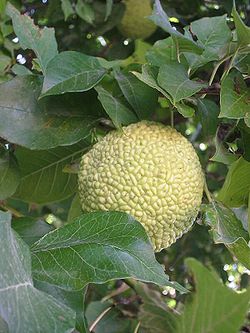
Recent research suggests that elemol, another component extractable from the fruit, shows promise as a mosquito repellent with similar activity to DEET in contact and residual repellency. Notes:The Osage-orange is commonly used as a tree row windbreak in prairie states, which gives it one of its colloquial names, "hedge apple". It was one of the primary trees used in President Franklin Delano Roosevelt's "Great Plains Shelterbelt" WPA project, which was launched in 1934 as an ambitious plan to modify weather and prevent soil erosion in the Great Plains states, and by 1942 resulted in the planting of 30,233 shelterbelts containing 220 million trees that stretched for 18,600 miles (29,900 km). The sharp-thorned trees were also planted as cattle-deterring hedges before the introduction of barbed wire and afterward became an important source of fence posts. The heavy, close-grained yellow-orange wood is very dense and is prized for tool handles, treenails, fence posts, electrical insulators, and other applications requiring a strong dimensionally stable wood that withstands rot. Straight-grained osage timber (most is knotty and twisted) makes very good bows. In Arkansas, in the early 19th century, a good Osage bow was worth a horse and a blanket. Additionally, a yellow-orange dye can be extracted from the wood, which can be used as a substitute for fustic and aniline dyes. When dried, the wood has the highest BTU content of any wood, and burns long and hot. Today, the fruit is sometimes used to deter spiders, cockroaches, boxelder bugs, crickets, fleas, and other arthropods.
Leaves turn bright yellow in fall, thorny branches, bears inedible round fruit 3-5" in diameter. The fruit is prized for it's ability to repel insects and spiders when scattered around home foundations. The crushed fruits of this plant are said to attract and kill cockroaches. Can be raised as container plant in northern states.
The wood is sought after for recurve bow making. Both male and female plants are needed to produce fruit. The ratio of male/female plants the seeds produce is up to mother nature, but a pack of 10 seeds always produces a mix of male/female plants in all of our previous field trials. Can be grown in zones 4-9.

Birds love the fruit. They are greatly favored by Black Birds and Cedar Waxwings, which have been know to strip a tree of all its berries.
Here is a link to a great web page about Firethorn and includes a recipe for Pyracantha Jelly.
Firethorn is a large, evergreen shrub that is cherished for its spectacular fall and winter display of scarlet fruits and ability to withstand dry and droughty conditions. Shooting long lanky stems in all directions, firethorn typically grows into a tangled mound up to 10 feet in height and 12 feet wide. It is armed with sharp thorns that hide among the dark,glossy green leaves.
Clusters (corymbs) of small white flowers appear in spring. These are up to 2 inches across and are borne close together creating the appearance of nearly solid surface of flowers. In fall the 1/4 inch berries begin to ripen, their color mellowing from green to shades of red, orange, or yellow. These persist through winter and into early spring depending on climate and appetite of the local bird population. Under bright sunny conditions the berries are plentiful but expect smaller crops in shadier situations. The color of both leaves and berries tends to be darker in cooler climates.
Culture: Not particular about soil and requires little or no supplemental fertilization.
Light: Full sun preferred but will grow in partial to fairly heavy shade. Flowering and fruiting will not be as heavy.
Moisture: Moist to very dry, well drained soil. Hardiness: Zones 5 - 9.
Usage: Pyracantha is often used as an espalier. Held flat against a wall, it can be shaped quite creatively. Because of its fast growth rate, sprawling, spreading habit, and ease of care, it can be used on slopes to great advantage requiring little maintenance or care. The wide-reaching stems may be pruned back as needed during warm weather as the shrub blooms on old wood. Even consider using it as an informal hedge! This will require some trimming and shaping for the first few years but the effort will produce impressively beautiful and secure
(thorny) hedges.
Landscapers love the firethorns for their fast rate of growth and ability to withstand drought and neglect. The shrubs ruggedness and disease and pest resistance makes this plant a very popular item in commercial landscapes.
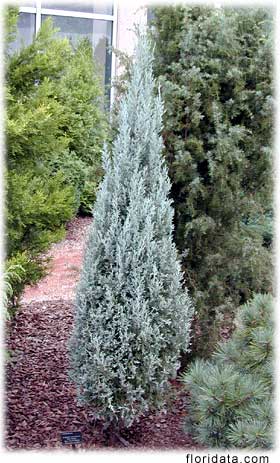
Trees may have male or female cones, but not both. The fruits are fleshy berrylike spherical cones, about one-third inch in diameter. They are bright blue with a whitish bloom and sweet tasting, with thin skins. Rocky Mountain juniper is closely related and quite similar to eastern redcedar, and was once believed to be the same species. But eastern redcedar has fruits that mature in a single season, whereas those of Rocky Mountain juniper take two year to ripen. Also, eastern redcedar had exfoliating bark. The two species hybridize where their ranges overlap.
Location: Rocky Mountain juniper occurs in isolated and scattered localities within a wide band from British Columbia to North Dakota, and south to Arizona and New Mexico. It grows from near sea level in the northern part of its range to more than 8000' above sea level in the south. Rocky Mountain juniper grows in alkaline soils on ridges, cliffs and rocky slopes, sometimes in pure stands, but more often in association with other mountain loving evergreens such as ponderosa pine, pinyon pine and Douglas-fir.
Culture: Rocky Mountain juniper is a slow growing tree
(6-12" per year), but one that can live more than 300 years. In
cultivation it tolerates acidic to alkaline soils, and does
best in those that are loose and well drained. It is best
adapted to culture in western and northern North America.
Light: Seedlings and saplings can tolerate rather dense shade,
but Rocky Mountain junipers, even the smaller cultivars, need
full sun to grow to their full potentials.
Moisture: Rocky Mountain juniper is tolerant of drought, but
perhaps less so than the other junipers. It should be watered
before the soil becomes completely dry. This juniper does
poorly in humid climates, but does fine in hot, dry
climates.
Hardiness: USDA Zones 4 - 7.
Usage: Use any of the cultivars of Rocky Mountain juniper for
attractive foliage effects in all seasons. This evergreen is
useful as a screen, hedge or foundation plant. They make great
anchors or focal points for the ends of hedges or mixed
borders. Rocky Mountain juniper is a tidy, formal accent shrub
alone or in small groups.
Features: Although most cultivars are probably too formal for
naturalistic gardens, Rocky Mountain juniper is ideal for neat,
well-organized landscapes. Most cultivars require little or no
pruning and are relatively free of cultural problems, insects
and diseases. They tolerate heat and drought well.
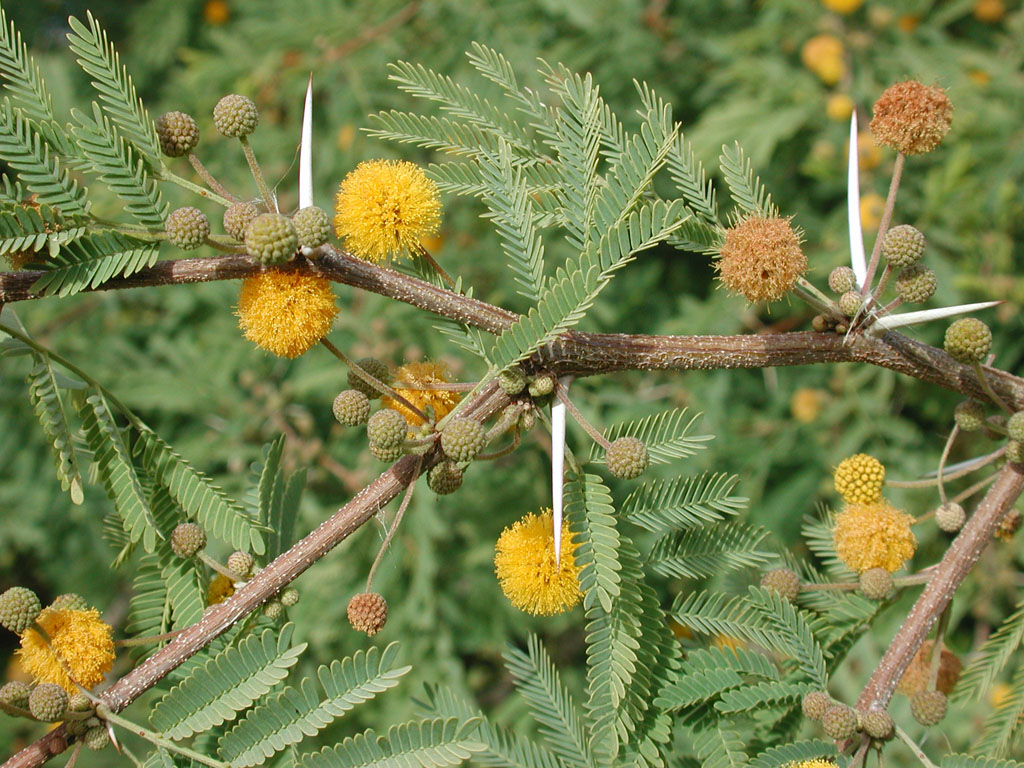
A beautiful shrub that flowers profusely. The flowers are so fragrant, they are used to make perfume in France, especially on the Riviera. You should have this plant in your garden. Good greenhouse/container plant that can be raised inside anywhere or outside in zones 8-10.
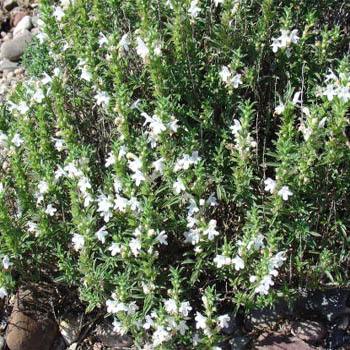
Plants can be pruned to form a low-growing aromatic hedge for the herb garden. It prefers a location in full sun and average well-drained soil. Once it is established, the plant does not require a lot of water. Plants do well in containers. The plants are also very attractive to beneficial insects.
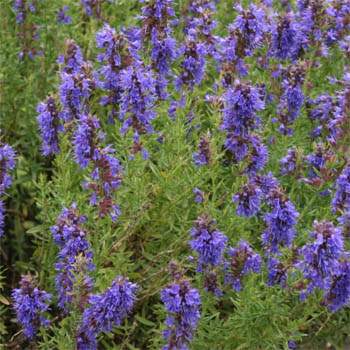
The Hyssop herb is an aromatic plant, and the young leaves are somewhat bitter and minty in flavor. A widely used culinary herb, both the flowers and leaves are used in salads although the leaves are much stronger in flavor. It is also used to flavor pork, chicken, soups, teas and stuffing.
Hyssop is also considered to be a medicinal herb, with the oil obtained from the leaves used to make herbal baths and facials.
Hyssop is an excellent bee plant. Legend has it that beekeepers rubbed their hives with hyssop and other herbs to encourage bees to stay. Hyssop also attracts hummingbirds and butterflies; claims that it keeps cabbage butterflies away from crops or repels flea beetles have not been substantiated.
A perennial hardy growing about 24" tall in zones 3 to 10.

